SIOBHÁN MCSWEENEY leads a stellar cast in a captivating revival of Dancing at Lughnasa which opened in London this week.
Brian Friel’s 1990 Olivier Award-winning play has been brought delightfully back to life at the National Theatre – where a superbly cast ensemble extracts its humour and emotion with gusto on a thoughtfully designed set.
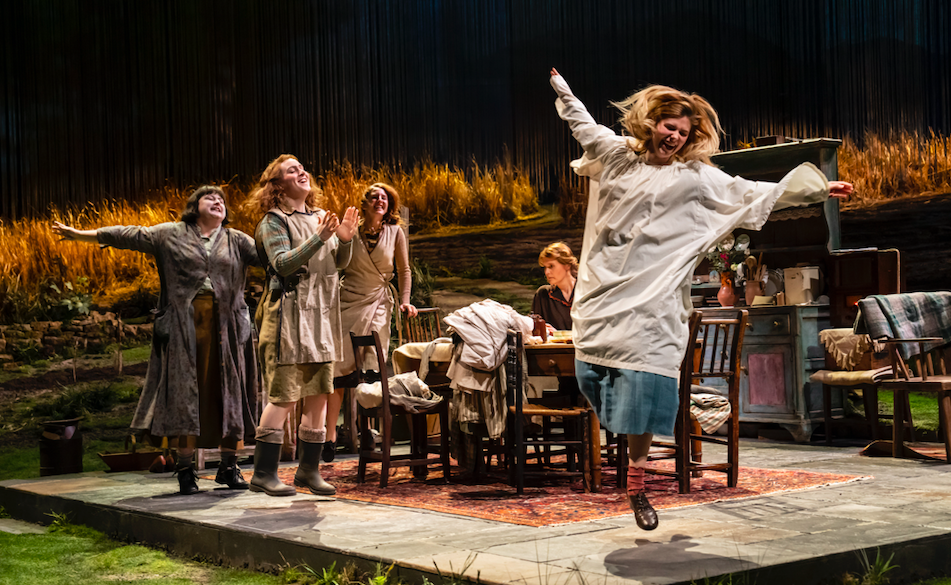 Siobhán McSweeney (Maggie), Bláithín Mac Gabhann (Rose), Louisa Harland (Agnes), Justine Mitchell (Kate) and Alison Oliver (Chris) in Dancing at Lughnasa at the National Theatre (PIC: Johan Persson)
Siobhán McSweeney (Maggie), Bláithín Mac Gabhann (Rose), Louisa Harland (Agnes), Justine Mitchell (Kate) and Alison Oliver (Chris) in Dancing at Lughnasa at the National Theatre (PIC: Johan Persson)A raft of famous faces are to be found in this production, which is directed by Josie Rourke.
McSweeney, of Derry Girls fame, plays Maggie, the second in command of the family of five Mundy sisters who live together in a rural Donegal home just outside the town of Ballybeg.
The Cork native’s wit and impeccable comic timing truly shine in this play, where Maggie is the glue that tries - ultimately in vain - to hold the sisters together and keep their spirits lifted as the world that they know slowly transforms around them.
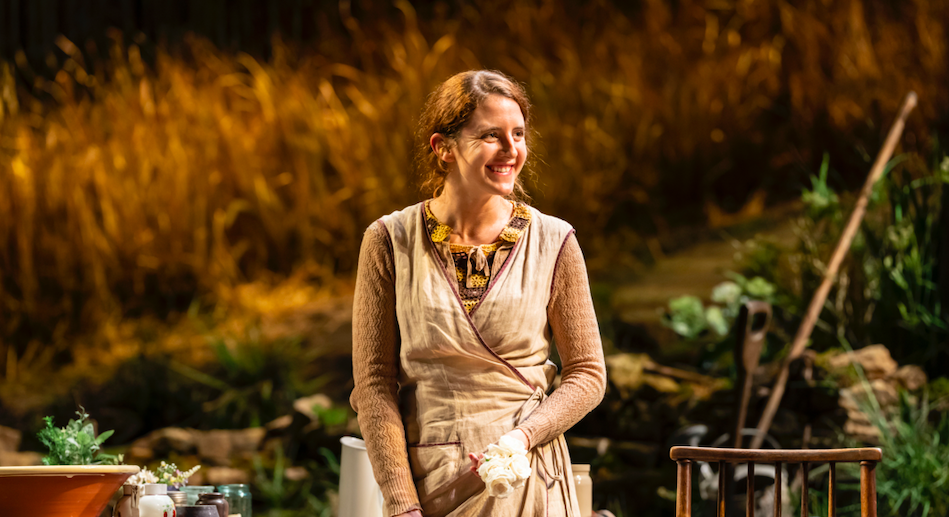 Louisa Harland (Agnes) in Dancing at Lughnasa at the National Theatre. (PIC: Johan Persson)
Louisa Harland (Agnes) in Dancing at Lughnasa at the National Theatre. (PIC: Johan Persson)Fellow Derry Girls star Louisa Harland is also in on the action, starring as the quiet yet formidable Agnes.
She is the main carer and confidante for her more vulnerable younger sibling Rose, who is played equally sensitively by Cork-born Bláithín Mac Gabhann.
When we meet these women it is 1936 and life in Ireland is changing.
The appearance of a giant radio in their kitchen, affectionately named ‘Marconi’ by the sentimental sisters, confirms it.
It keeps cutting out, but the message is clear, the future is calling and the Mundy women should really prepare themselves.
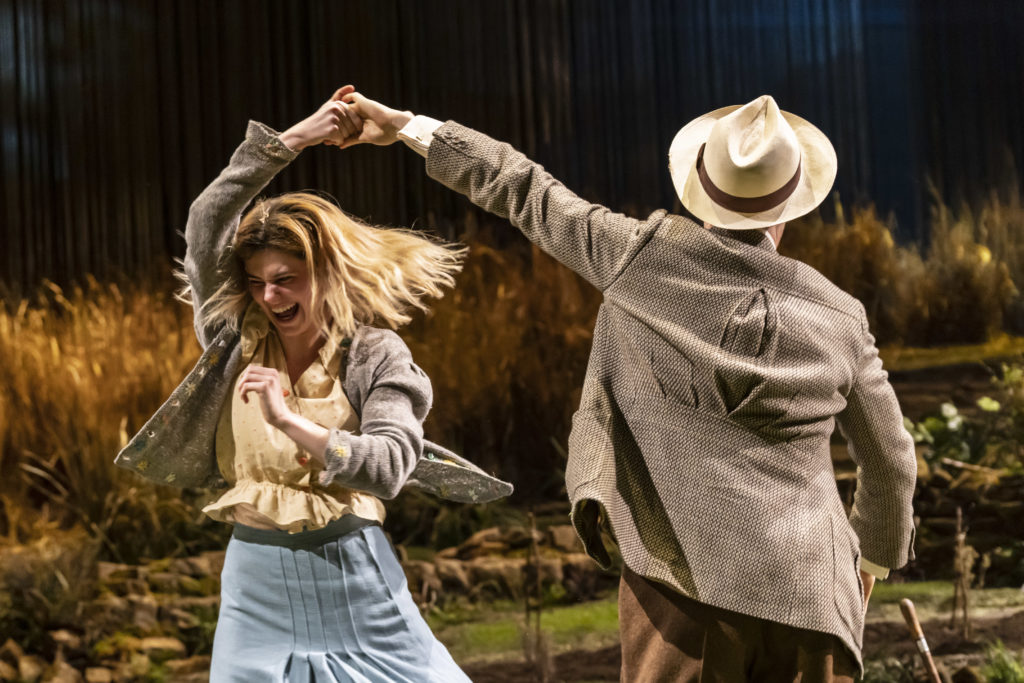 Alison Oliver (Chris) and Tom Riley (Gerry) in the National Theatre production (PIC: Johan Persson)
Alison Oliver (Chris) and Tom Riley (Gerry) in the National Theatre production (PIC: Johan Persson)But they are oblivious to the call as it is harvest time.
They instead spend their days longing for one last dance at the Lughnasa festival and joking about the lack of men in their lives.
And as they dance and sing along with Marconi, while fulfilling their daily roles in and around the house, they are unaware that they are living on the edge of a precipice and that soon their lives would change forever.
There are exceptional, full-bodied performances at every turn in this play, but none elicits as many belly laughs from the audience as McSweeney’s, whose delightful depiction of the cheeky yet caring Maggie is enthralling to watch.
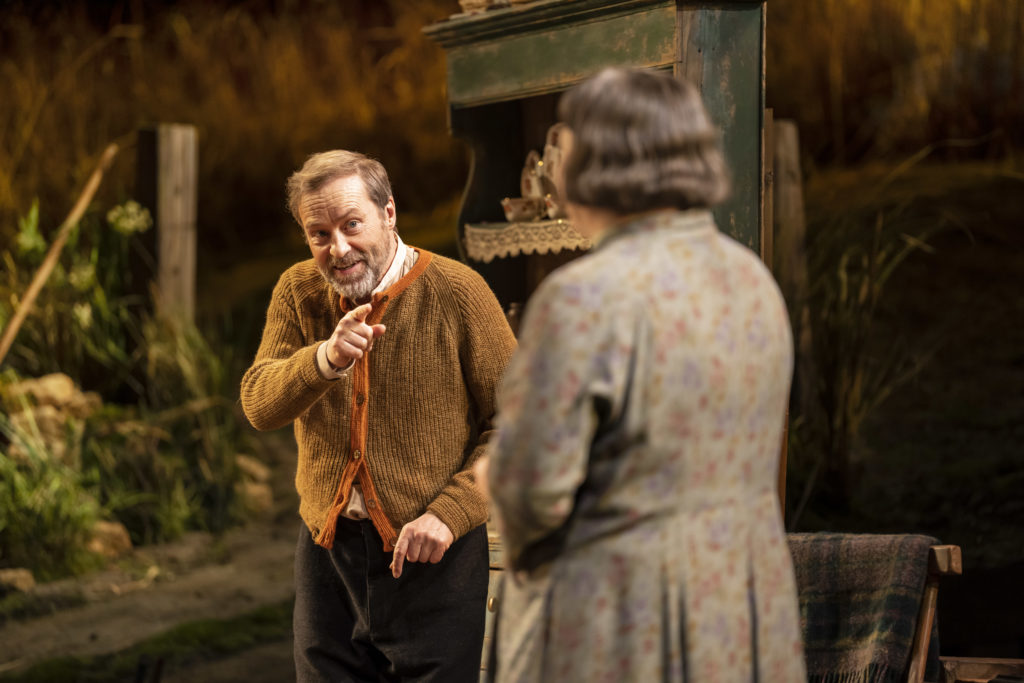 Ardal O'Hanlon as Jack in Josie Rourke's revival at the National Theatre. (Pic: Johan Persson)
Ardal O'Hanlon as Jack in Josie Rourke's revival at the National Theatre. (Pic: Johan Persson)Running a close second in the humour stakes is Dublin-native Justine Mitchell, of Conversations with Friends fame, whose portrayal of the family matriarch, eldest sister Kate, shows her to be eloquently effective at landing a punchline.
Mitchell’s perfectly pitched take on Friel’s hard-working, God-fearing schoolteacher is both hilarious and depressing all at once - as the audience knows a time is coming that Kate, as likable as she is, is simply not suited for.
A further familiar face comes in the form of Co. Monaghan native Ardal O’Hanlon, who is no stranger to screen or stage - and who also starred in the Channel 4 hit Derry Girls.
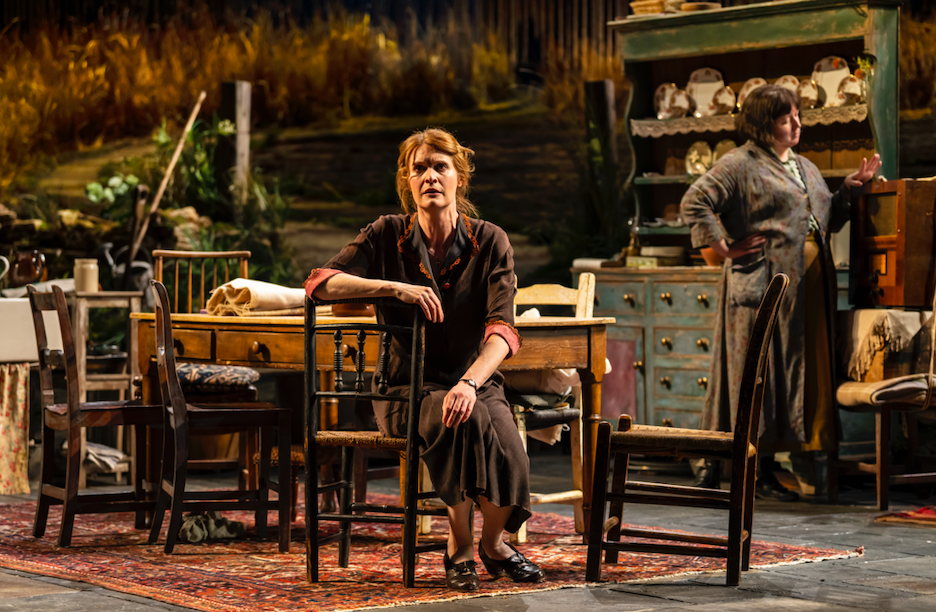 Justine Mitchell stars as Kate in Dancing at Lughnasa at the National Theatre. (Pic: Johan Persson)
Justine Mitchell stars as Kate in Dancing at Lughnasa at the National Theatre. (Pic: Johan Persson)O’Hanlon is effectively eccentric as the only Mundy brother, Jack – a priest who returns from 20 years spent as a missionary in Uganda with notions about pagan rituals and secular ceremonies that are unwelcome among his religiously devout sisters.
Another familiar face is Tom Vaughan-Lawlor, the RADA-trained actor who first rose to fame in RTE’s Love/Hate series.
Vaughan-Lawlor plays Michael, the son of the fifth sister, Chris (Alison Oliver) - an unmarried mother with a part-time boyfriend who seldom visits.
Clever positioning by Rourke sees Michael narrate the whole tale as an adult, nostalgically looking back on the “best summer of his life”, when he was aged just seven, before everything changed.
 Tom Vaughan-Lawlor stars as Michael in the production at the National Theatre (PIC: Johan Persson)
Tom Vaughan-Lawlor stars as Michael in the production at the National Theatre (PIC: Johan Persson)Although few and far between, Vaughan-Lawlor’s heart-piercing monologues are emotionally charged and cause a necessary halt to the hilarity enjoyed elsewhere in the play.
It is he who offers the truth, the back story and the hidden scenes which tell the audience what sadness has blighted the lives of his mother and his aunties in years gone by and the unfortunate fate that will eventually befall the women who jointly raised him.
Such drama and emotion build with each scene in Rourke’s production.
And it’s all superbly supported by Robert Jones’ stunning set – complete with the traditional Irish furniture that one would expect to find in the Mundys’ Donegal home, and a meticulously designed rural landscape surrounding it.
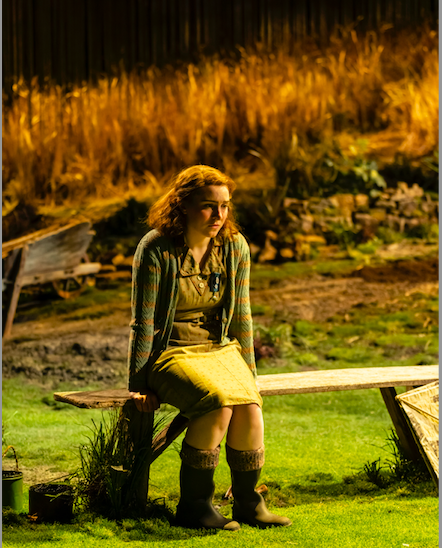 Bláithín Mac Gabhann as Rose in the National Theatre production (Pic: Johan Persson)
Bláithín Mac Gabhann as Rose in the National Theatre production (Pic: Johan Persson)From the set to the cast and the many many laughs, there is so much to enjoy in this production. But what will stay with me the longest is the dancing.
Particularly one splendid scene which saw a rousing piece of traditional Irish music move the five Mundy sisters to let go of their fears and the restrictions society had placed upon them and simply have a good old dance on and around the kitchen table.
In there somewhere is a message that remains as relevant for us all today as it was for Friel’s Mundy women.
Dancing at Lughnasa runs at the National Theatre until May 27, for tickets or further information click here

